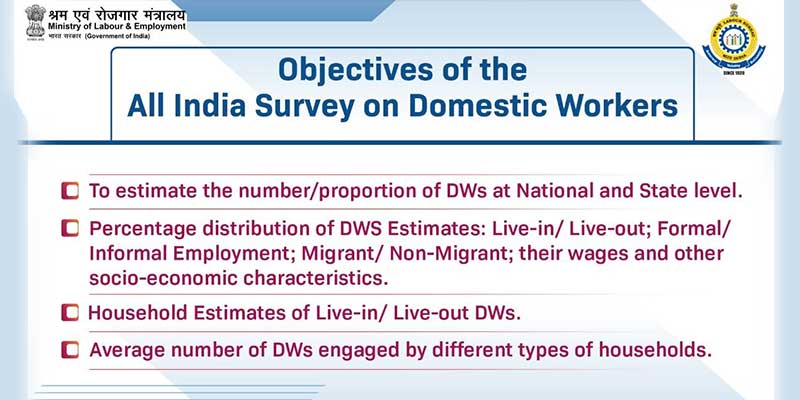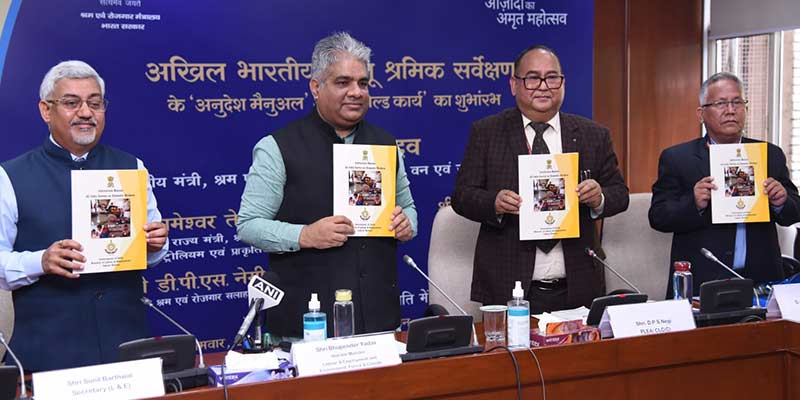- India
- Nov 23
Govt launches first national survey on domestic workers
Union Labour Minister Bhupender Yadav flagged off the fieldwork of All India Survey on Domestic Workers and unveiled its instruction manual.
Significance of the survey
• Domestic workers are the third-largest category of workers after agriculture and construction.
• Domestic workers (DWs) constitute a significant portion of total employment in the informal sector. However, there is a lack of data on the magnitude and prevailing employment conditions of domestic workers.
• According to the latest data on the e-Shram portal, around 8.8 per cent of the registered 8.56 crore informal sector workers fall in the category of domestic workers.
• Hence, with the view to have time-series data on domestic workers, the central government has entrusted the Labour Bureau to conduct an all India survey on domestic workers.
• It will help the government understand the significant issues on the certain special and vulnerable segments of labour and will guide effective policymaking.
Scope of the survey
• The result of this survey will help the government understand the significant issues about certain special and vulnerable segments of labour and will guide effective policymaking in respect of domestic workers.
• This survey will cover a database of 5.5 lakh households across the country and cover all types of domestic services like cook, driver, housekeeping, tutors (for children), watchmen, etc. This evidence-based study will help the government in policy-making for this segment of workers.
• Under this survey, all 742 districts will be covered. At the all-India level, a total number of 12,766 first stage units (FSUs) i.e. 6,190 villages and 6,576 Urban Frame Survey (UFS) blocks will be covered.
• The result of the All-India Survey on Domestic Workers is expected within one year.
Objectives of the survey:
• All India Survey on Domestic Workers is aimed to estimate the number and proportion of domestic workers at the national and state level, percentage distribution of domestic workers for live-in/live-out, formal/ informal employment, migrant/non-migrant, their wages and other socio-economic characteristics.
• It will provide the household estimates of live-in/live-out domestic workers and an average number of domestic workers engaged by different types of households.
Other important points of the survey:
• The survey collects information on the following broad parameters, including household characteristics, such as household size, religion, social group, usual monthly consumption expenditure, nature of dwelling unit.
• Demographic characteristics, such as name, age, relation to head, marital status, general education level, usual principal activity status, subsidiary activity status and status of domestic workers are covered.
• In addition to this, it will also collect information on domestic workers such as their age of entry, social group, migrant status, vocational training/education, number of households served by domestic workers, activities performed by them, the number of days worked, duration of work, type of remuneration and its frequency, type of contract, among others.
• Information on employer households is also collected such as their preferences of domestic workers regarding gender and marital status, mode of payment of wages, the number of days worked, mode of engagement, whether domestic worker’s services were availed during the COVID-19 pandemic, and medical support given.
Manorama Yearbook app is now available on Google Play Store and iOS App Store


